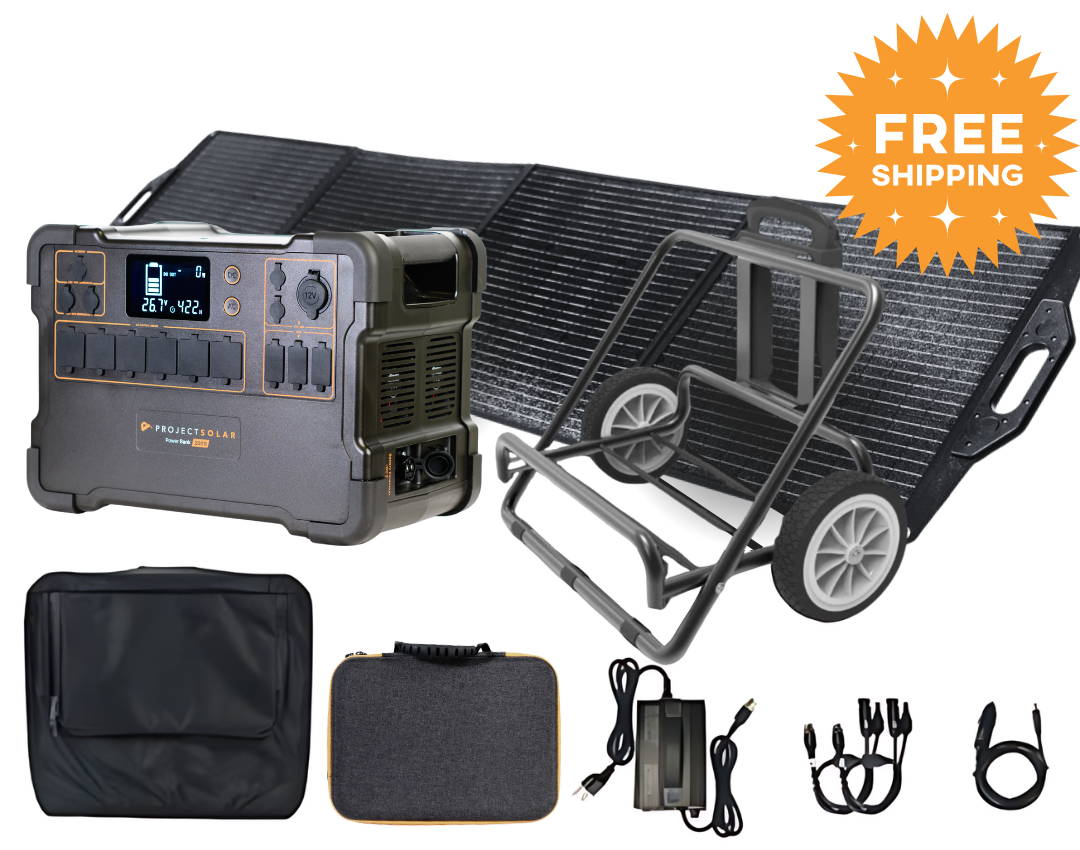Comparing Solar Battery Kits
While we have every confidence in the quality and value of our products, we thought we'd take our customers' advice and let the numbers do the talking. Below, we've put together a comparison analysis for our Power Bank alongside other top advertisers' kits.
Use the tabs to navigate between providers.
- Project Solar
- 4Patriots
- Jackery
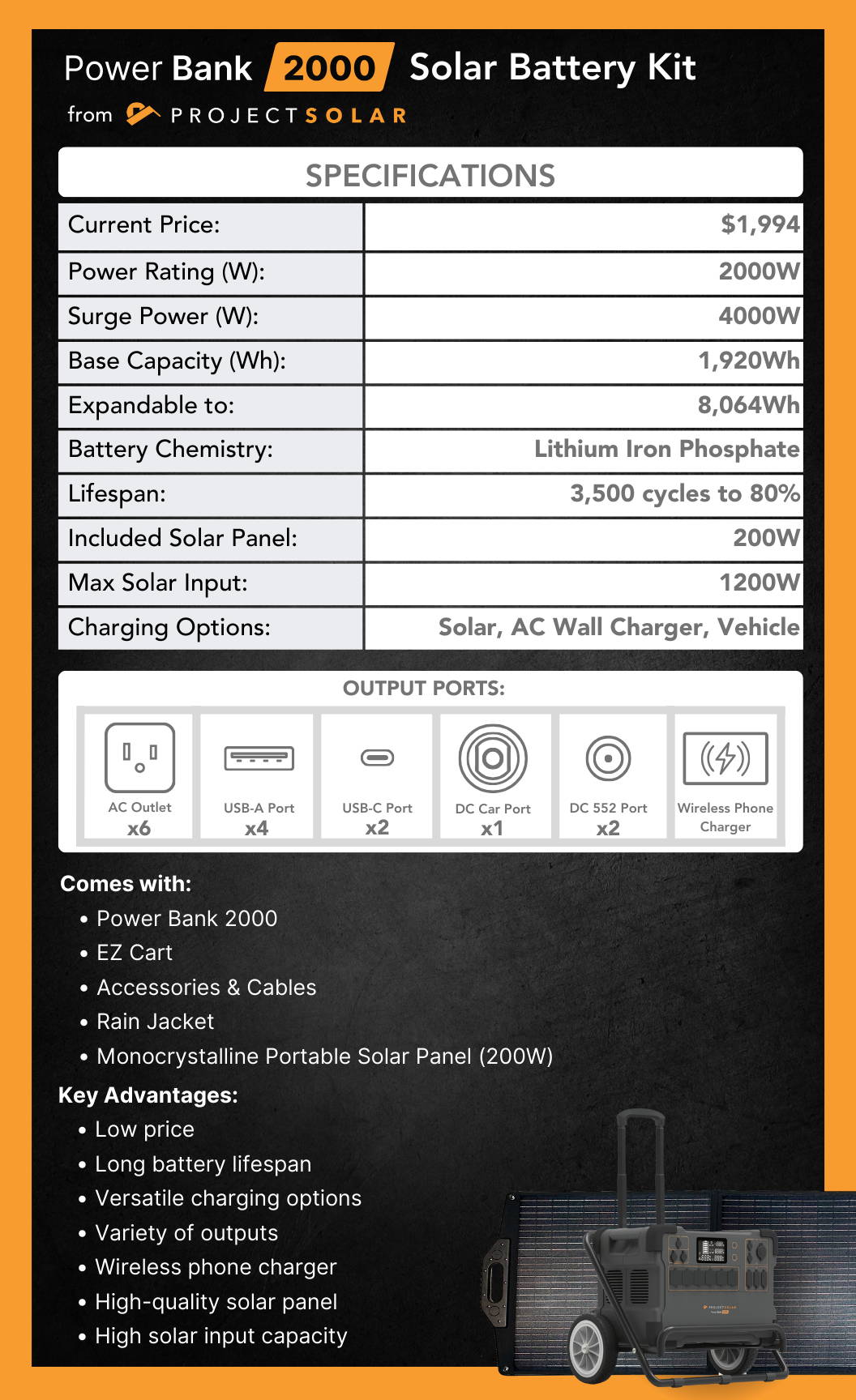
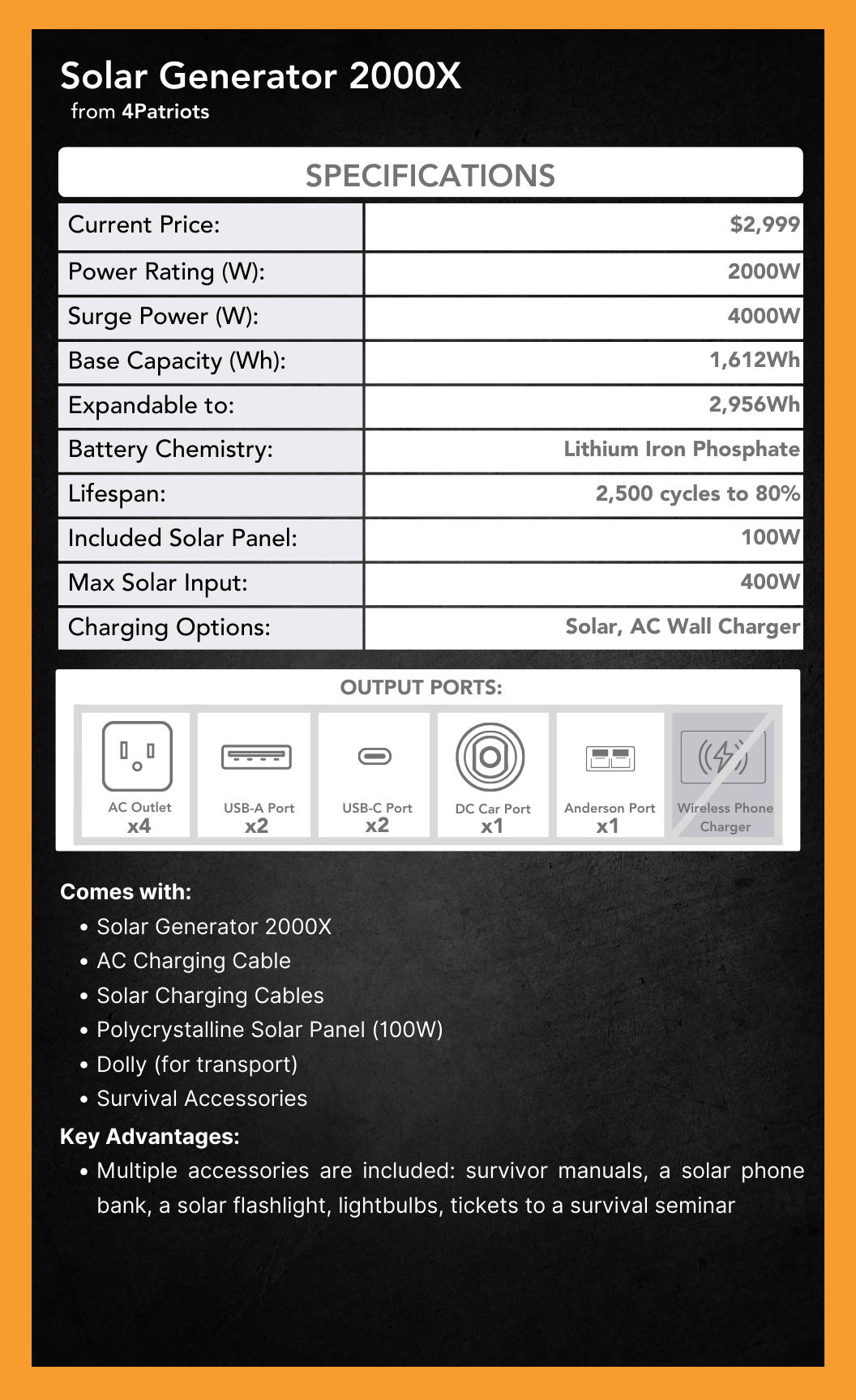
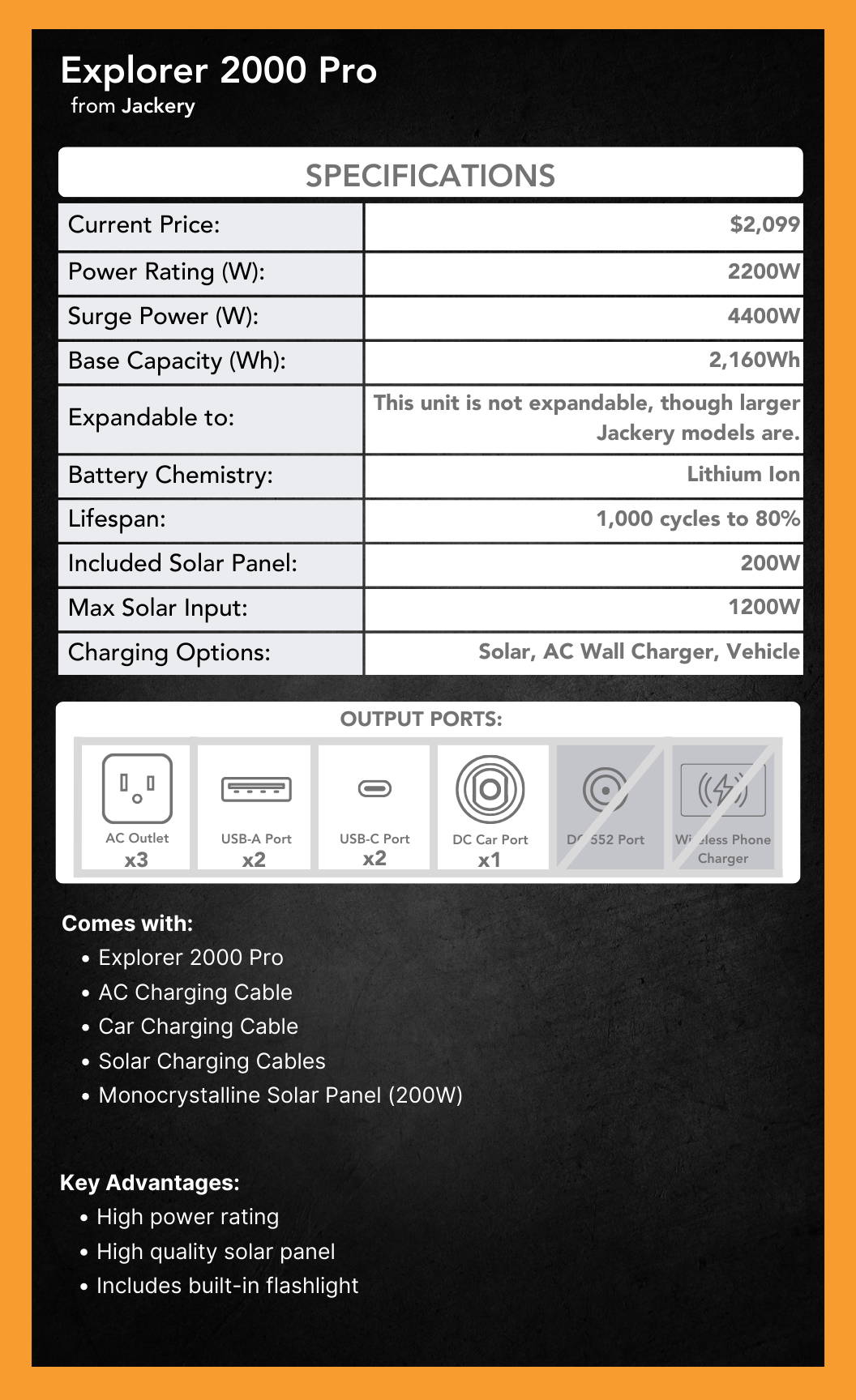
- Project Solar
- 4Patriots
- Jackery
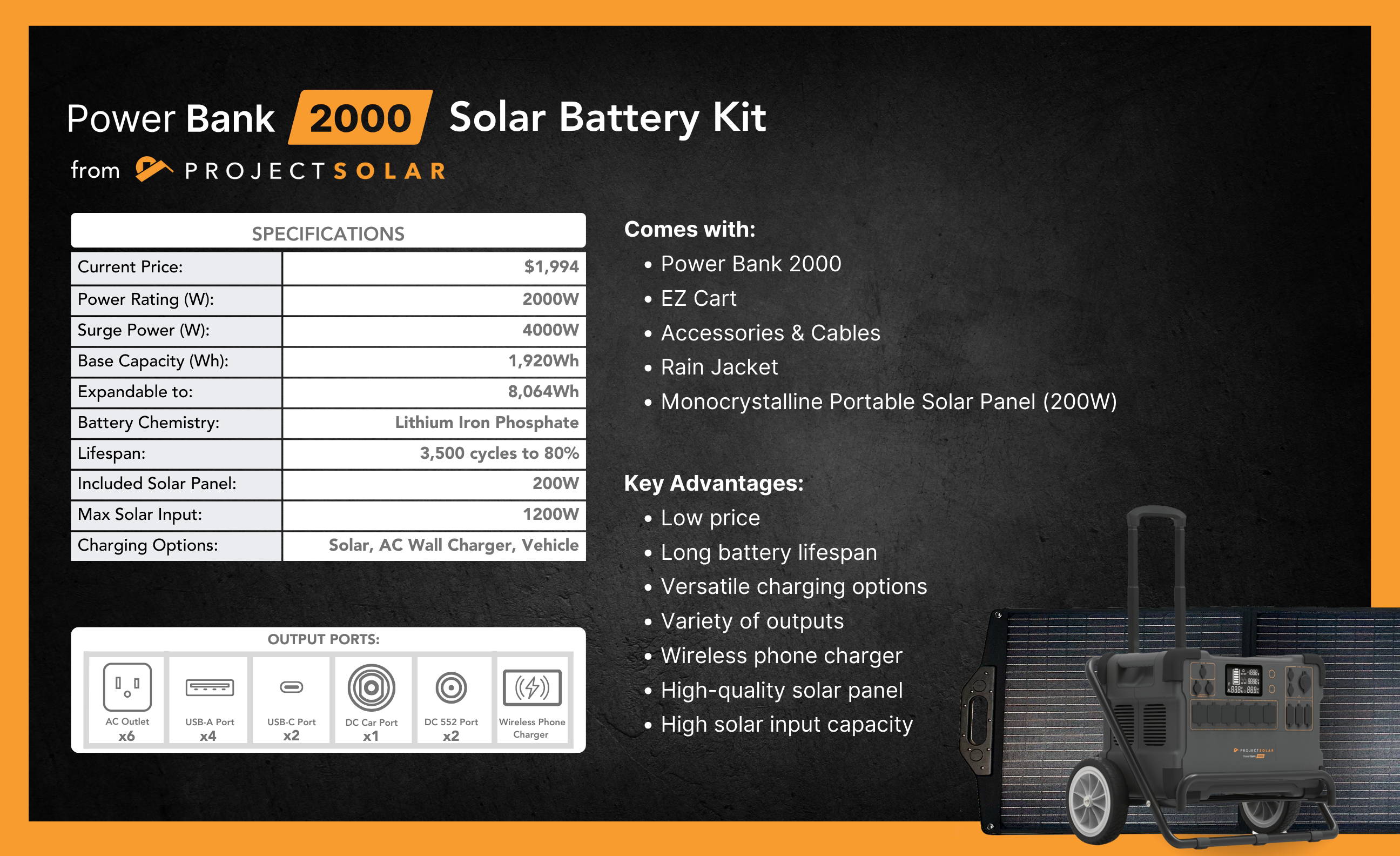
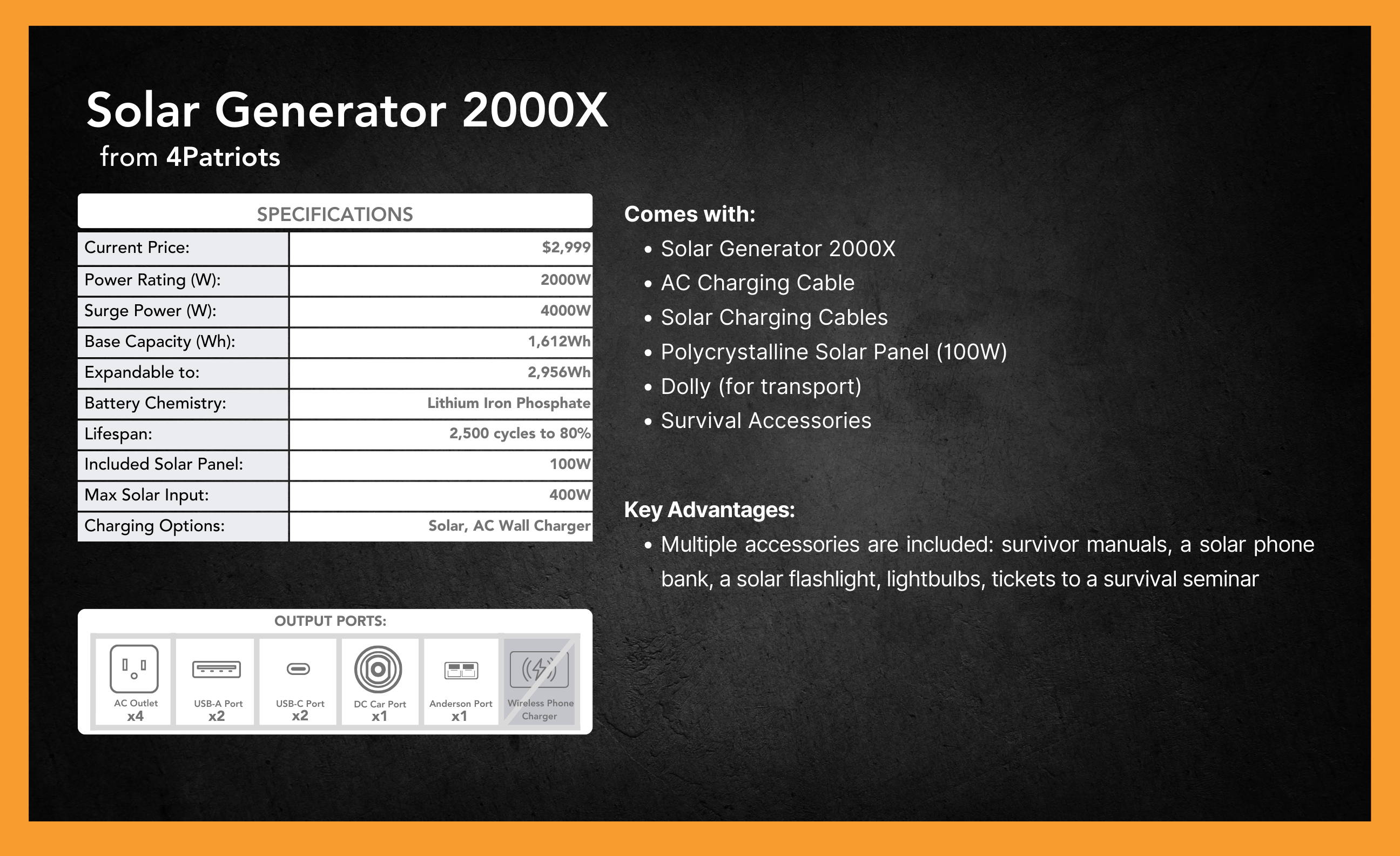
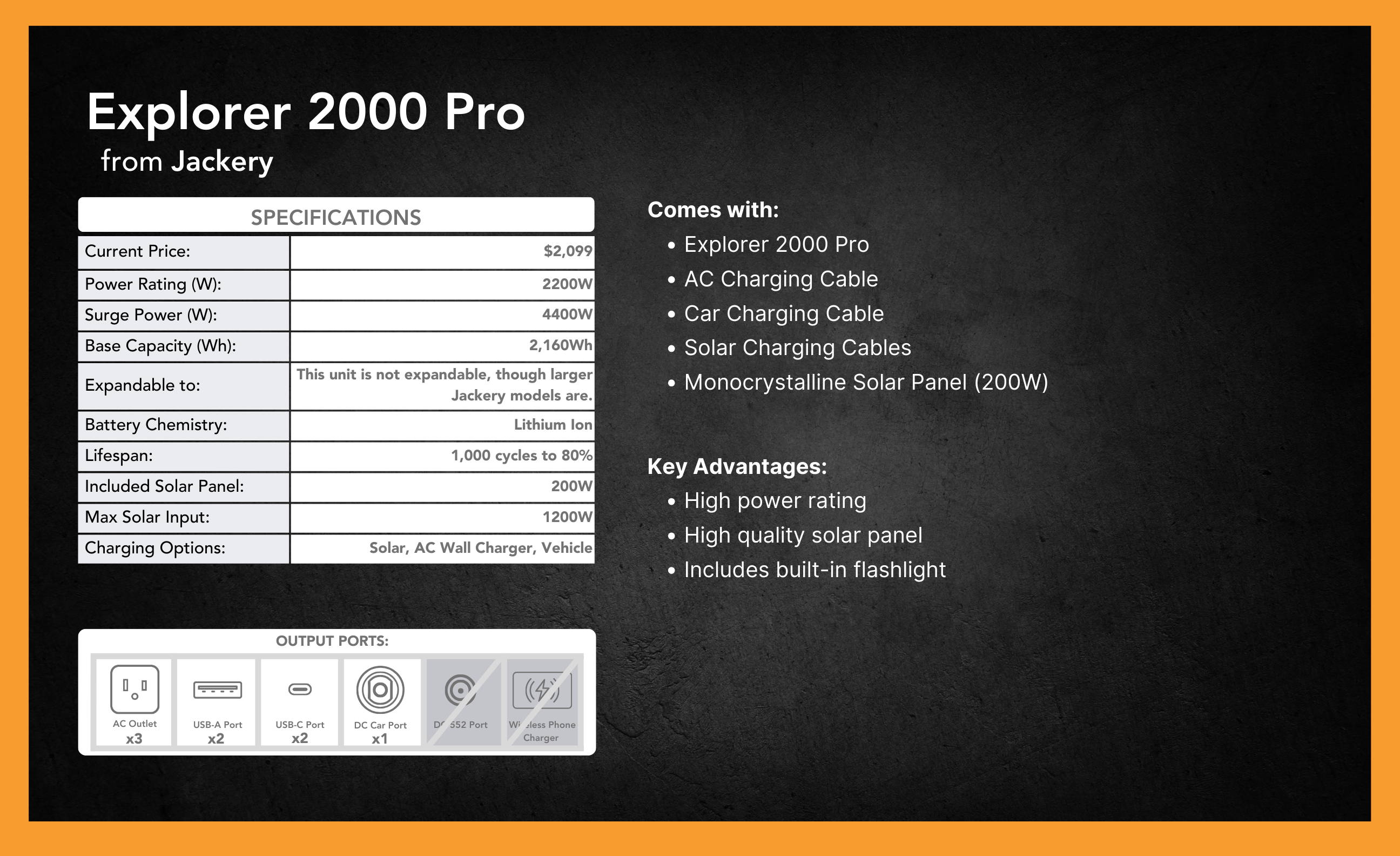
Updated May 17, 2024
Understanding Product Specifications
We get it: specs can be confusing. We decided to include a glossary of some of these terms to help you do your research:
Power Rating (W): The power rating, measured in watts (W), indicates the maximum amount of power that the solar battery kit can deliver at a given time. It represents the capability of the battery to supply electrical energy to connected devices or appliances. This is different than the capacity, which refers to how much energy the battery can store (see below).
Surge/ Surge Power (W): Surge power refers to the maximum amount of power that a solar battery kit can temporarily supply for a short duration beyond its normal operating capacity. Surge capacity is useful for accommodating sudden spikes in power demand from connected devices or appliances (like when your fridge or AC kicks on).
Capacity (Wh): Capacity, measured in watt-hours (Wh), represents the total amount of energy that a solar battery kit can store and deliver over a single charge cycle. It tells us how much electricity the battery can provide before needing to be recharged.
Expandability: Expandability to refers to the ability of the solar battery kit to be expanded with additional unit to increase its capacity. This feature allows users to customize and scale their energy storage system according to their evolving needs.
Charging Options: Most solar battery kits can be charged with solar panels as well as a standard 110-120V wall outlet. Some kits are able to charge from a vehicle as well.
Battery Chemistry: Battery chemistry refers to the type of chemical composition and materials used in the construction of battery cells. Most batteries use a type of Lithium-ion (Li-ion) chemistry--Lithium Iron Phosphate (LiFePO4) is a subset of Li-ion battery chemistry, and is generally safer with a longer lifespan than others. each offering unique advantages in terms of energy density, lifespan, and performance.
Battery Lifespan: A battery's lifespan is the expected duration or number of charge cycles that the solar battery kit can endure before experiencing significant degradation in performance or capacity. For example, 3,500 cycles at 80% means that a battery can be charged to full and drained completely 3,500 times before the battery reaches 80% of its life.
Max Solar Input: Max solar input is the maximum amount of solar power (in watts) that can be connected to the solar battery kit for charging. For instance, if a unit has a max solar input of 400W, then it can typically handle four 100W panels, two 200W panels, one 400W panel, etc.
Choosing the Right Option for You
No matter what you're buying, it's important to do some research.
If you're interested in purchasing our Power Bank solar battery kit, check it out here:

